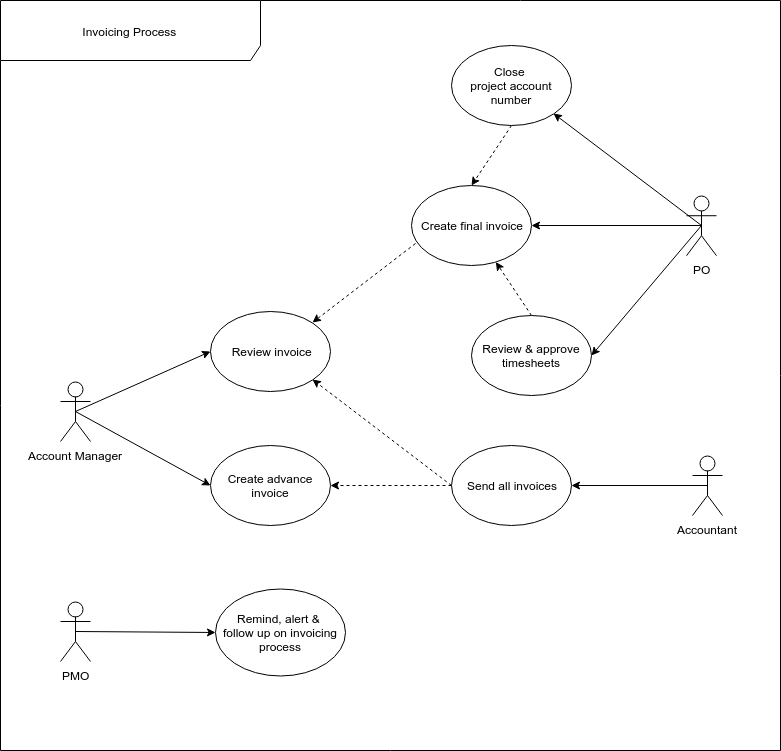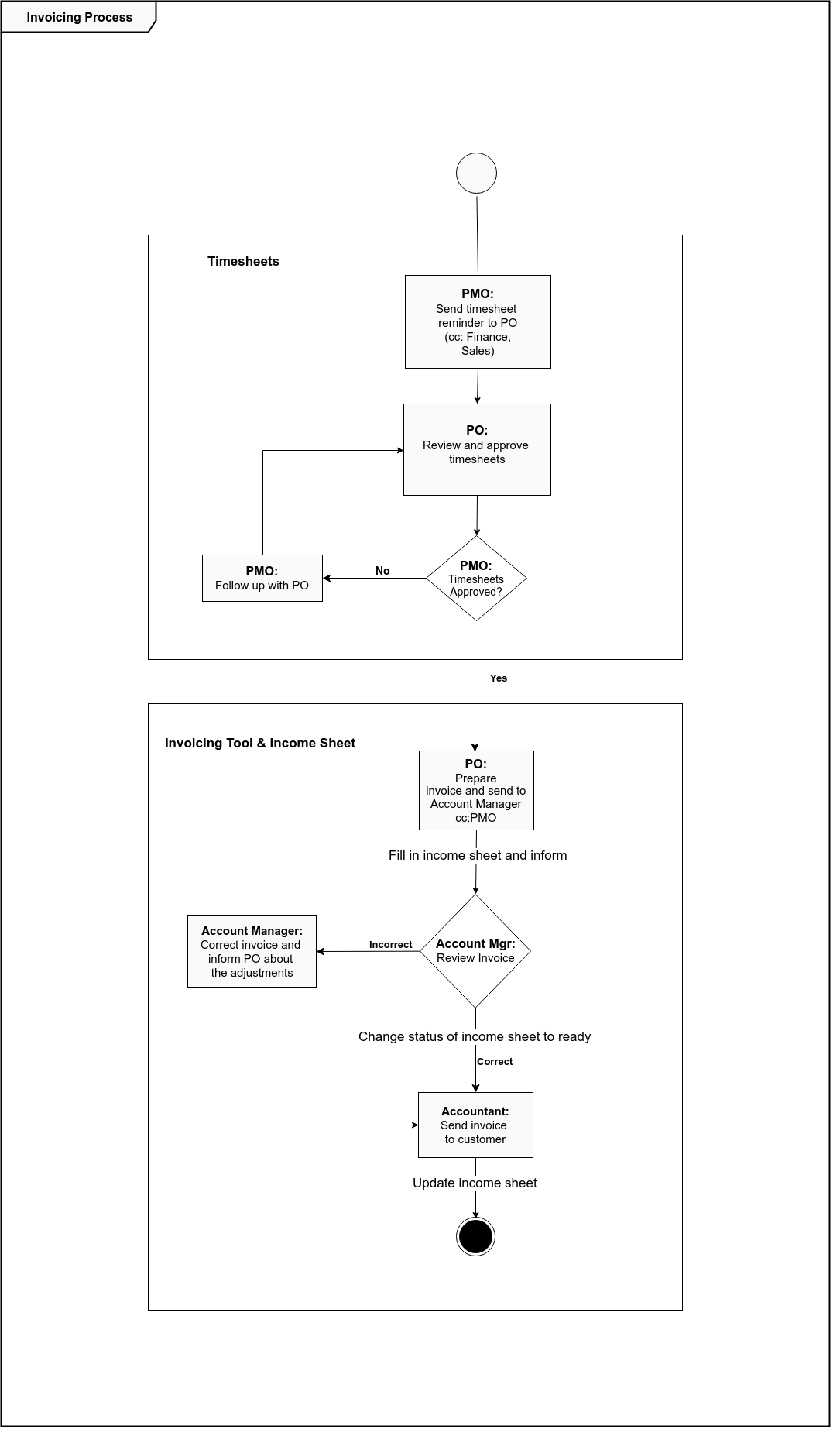I can put the success of my 5 step approach to process design down to:
- The combined experience of the many international experts I have worked with and learned from at Web Essentials
- Two years spent in the PMO with a bird's eye view of all departments, their successes and their struggles
- My obsession with data visualization and healthy love of logic!
The benefits of a focus on business process improvement
A clearly defined business process helps to get things done because it is clear how it's done and who is responsible for it in order to get a successful outcome.
If you focus on improving the right processes, in the right way, you can design your way to success! Gains include:
- Timely delivery: smooth processes make our work easier so we can deliver products or services on time
- Increased efficiency: inefficiencies are addressed by defining clear responsibilities
- Better stability: the right processes create order in a company with many moving parts and people
- More capacity: for our project managers, having process documentation and templates to hand leaves them free to focus on getting real work done
- Increased accountability: by mapping out your processes, you can see where the bottlenecks are, and make sure the people accountable have the right support or knowledge they need to reach the outcome
- Improved training efficiency: clear process frameworks help form part of a structured onboarding plan and reduce the need for internal training
- Continuous improvement: by being proactive instead of reactive in identifying complex issues you can keep on top of changing expectations, new technologies and become more competitive
The face-off: Agile vs. set processes
As an Agile company, aren't processes the enemy?
Our development teams solve issues ad-hoc, an approach that gives them the freedom and agility they need to deliver better products. Web Essentials Scrum teams are a process-free zone.
Across the rest of the company, we're an open and communicative bunch, and addressing issues directly is our preferred way of working.
But sometimes, mostly in a cross-departmental context, a persistent problem can generate a lot of frustration and confusion. The time that team members invest in finding the answers to "what", "how" and "who" could be spent getting real work done instead. I call this scenario "lessons never learned".
It's important to know it's (really) easy to create inefficiencies with set workflows. But it's also important to quickly identify when a persistent issue is causing problems.
If you see the problem is too complex to tackle ad-hoc then it's time to try introducing a process.
My 5 steps to business process improvements
1. Analyze
a. Define the problem: What's the problem that I want to solve? The REAL PROBLEM. I can easily get distracted by other surrounding problems while trying to identify the real one
b. Define target and purpose
- Imagine how I want my outcome to look like and list down what is blocking me from reaching it
- Define objective: what we aim to achieve
- Define outcome: what will gain from the output
c. Define process boundaries: Define beginning and end boundaries (scope) of process otherwise the process will never end and it will never be done
- Identify input (initial state): information or material needed to start the process.
- Identify output (final state): what we actually deliver.
d. Define actors, stakeholders, owner:
Actors: define participants in the process which are executing actions.
Stakeholders: the person with an interest or stake in the process.
Owner: process owner who has the ultimate responsibility for the performance of a process in realizing its objectives and has the authority and ability to make necessary changes.
e. Define escalation: Define point of escalation for exceptions and decision making
2. Plan
a. Alignment of actors and stakeholders: Gather ideas from actors and stakeholders and find solution
b. Set roll out time: Set process roll out time so I can commit to solving the problem within that timeframe
3. Execute
a. Define Action Steps
- Compile input and ideas together to come up with the most efficient and balanced approach for all actors and stakeholders.
- Define the actions needed and the actors of each. This is where we sketch it out. In Web Essentials, we use Confluence for our documentation, and the plug-in draw.io become my lifesaver. I use draw.io to draw use case diagrams and UML (Unified Modelling Language) activity diagrams to visualize the process flow solution.
- At this stage it is really important to keep in mind that process is created to help workflow and efficiency. That means keeping action and review steps to a minimum! Processes should remove hurdles rather than add them.
b. Alignment of proposed situation
- Introduce the actors, stakeholders and owner to the proposed process. In this meeting I take on board a lot of feedback which I use to adjust the process until everyone involved comes to an agreement on the solution
c. Approval: Once I get the green light from the process owner, I can change my document status from "Draft" to "Approved". This now becomes the official documentation of the process for people to follow.
d. Define process KPIs: Define KPI diagram to track process performance. This is a key step to drive continuous improvement of the process
4. Roll Out
a. Provide training: Gather everyone involved and present the approved process. Explain the steps and their role and responsibility to make sure that everyone understands.
b. Provide support and assistance: Implement the process and guide actors during the first execution of the process. Although the process has been approved, I cannot neglect this step. It's important to make sure that the process is active. A rule that is not followed is a waste of everyone's time.
c. Track progress:
- Now is the time to test if the process had made the situation better or worse.
- The best case scenario here is that the process is on track, the outcome is reached and everyone is adapting to the new workflow.
- The tracking stage is a good opportunity to identify myself what could be improved. I focus on the questions:
1) is the outcome reached?
2) is the process being followed?
If the answer to either of those is no then the process needs to be revisited
d. Consolidate and integrate feedback:
- Gather feedback from actors, stakeholders and the owner.
- Update the process based on the feedback given
5. Maintain
a. Manage process adoption
- Make sure that the process is being followed and report feedback to the process owner.
- Even after successful initial adoption, team members can easily forget or neglect the process, especially when there are multiple actors in one process. The PMO are responsible to follow up, remind and keep everyone on track
- There's almost always issues or exceptional cases that are not covered in the new process. If the exception cannot be solved adhoc with the process owner then I will return to the Execute step
- Continue to examine issues raised (in PO meeting or at any time) to detect if there are changes needed or the process is no longer as effective
b. Consolidate feedback: Frequently consolidate feedback from involving people.
c. Implement improvement: Implement improvements based on feedback and KPI performance report.
d. Maintain ownership: Make sure that actors, process owner and stakeholders take ownership of their responsibilities.
Business Process Improvement - a practical example
I mostly help with cross-departmental processes because they are the most in need of alignment. Each department has different goals and KPIs and in order to work together smoothly, they need to find the intersections and where to compromise.
For example, the invoicing process in Web Essentials involves three departments, Sales, Production and Finance. These three departments each have their own goals:
- PO: make sure to complete agreed scope within budget, time and quality
- Finance: cash flow
- Account Manager: client relationship
All three departments are crucial to the successful outcome of a paid invoice but they each don't have the information needed to complete the process. The Account Manager knows the contract details (price agreement) but not what percentage of the work has been completed. The PO knows what work has been done but is not as familiar with the contract details or privy to all discussions between the Account Manager and client. Finance needed the information from both to get the payment processed.
The Problem: The task of invoicing the client was being pushed back and forth between departments: PO was waiting on the Account Managers and the Account Managers were waiting on the POs. Finance was chasing both.
The Solution: A clear workflow around a central "income sheet" to control the crucial information all 3 stakeholders needed to create, confirm and process the invoice.

Invoicing Process use case diagram example
Here is the diagram we sketched out at the "Execute" stage based on our discussions during "Analyze" and "Plan". We knew our actors and had suggestions for the steps they should take. Now it was a case of visualizing these steps and how they interrelated.
The use case diagram maps out the actors in the process and each of the use cases (actions or steps to be performed) and who will perform them.

Invoicing Activity Diagram example
The below activity diagram is from the same invoicing proces. We use UML (unified modelling language) as for our business process modelling at Web Essentials.
As you can see, the diagram outlines clear tasks, where they take place, how they are done and who is responsible for each.
I get a real kick out of creating useful process flow charts that untangle communication lines and take the organizational load off my colleagues. If changes to the process are agreed I can quickly use the draw.io tool to adapt and update the process in the central documentation.
A note: when you are doing business process modelling, be careful not to fall into the trap of "analysis paralysis". The 5 step method support an agile workflow. It is better to work iteratively and release your activity diagram early on for feedback and improvement iterations together with your team.
How to create a culture of business improvement
In the 2018 BPTrends State of Business Process Management survey, 93% of the organizations surveyed are working on multiple process improvement projects.
A culture of process improvement means actively looking for areas where we can improve processes or define unclear processes. Proactivity rather than reactivity is the key.
At Web Essentials, issues can be raised to me at any time, but the dedicated slot in our PO meetings for workflow issue discussion keeps us aware of bottlenecks and focused on how to improve.
A culture of business process improvement is also about inspiring confidence in and creating a positive attitude towards change. This is where as a process creator you need to work high level and prove yourself as a help not a hindrance. My colleagues know if they raise a workflow issue with me it will be handled using a proven methodology - but above all - a logical perspective.
Takeaways
- Measure, improve, repeat. Good process management doesn't stop at rollout. According to a Polish survey, 62% of companies had documented, repeatable processes but only 4% of companies actually measured and managed them
- Avoid over-design: make your processes easy to follow and remember the product is the process outcome, not the process itself!
- Use a tried and tested methodology that still supports an agile approach to process management
- Create a culture of continual process improvement
- Define clear process ownership to keep tabs on the continued effectiveness of each process. Otherwise your process repository will fill up with redundant documentation that doesn't help your team
- Take advantage of visualization tools and diagrams early on, especially when you have many actors involved
- The future is automated. Investigate how increasing the level of Business Process Automation could increase your efficiency and give you a better foundation for analysis of your current processes.
More Resources
For a deep understanding of the state of the BPM market, the bi-annual BPM trends survey is a great one-stop resource. You can download the 2018 version on their website, and the 2016 version is available here.
Want to take the next step and automate your processes using business process management software? Talk to us today!






